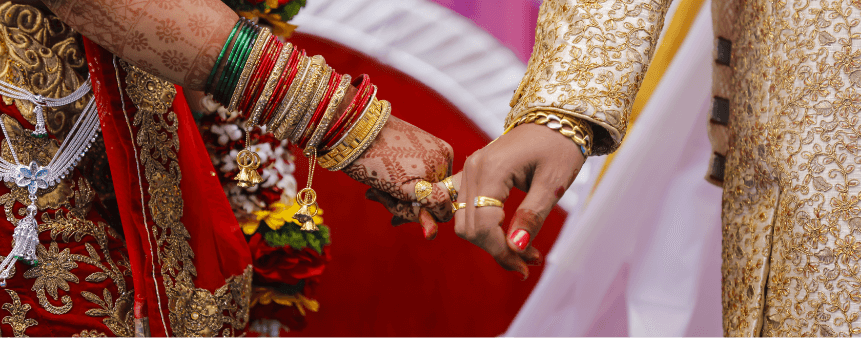Talk to India's best Astrologers
First Consultation at ₹1 only
Login
Enter your mobile number
Navratri, which means 'nine nights,' is a time for worshipping the Hindu deity Durga and her various forms. The festival of Sharad Navratri is divided into nine days, each dedicated to a different form of Durga.
On each day of Navratri, devotees perform puja and offer prayers to the deity. The last day of Navratri is known as Dussehra or Vijayadashami, which marks the triumph of good over evil. Continue reading to know more about this auspicious festival.
Mentioned below are the dates on which Sharad Navratri will happen in the year 2024. These are as follows:
| Navratri Days | Dates | Goddess Names |
|---|---|---|
| Day 1: Ghatasthapana | Pratham Tithi, 3rd October 2024, Thursday | Maa Shailputri Puja, Ghatasthapana |
| Day 2: Dwitiya | Dwitiya date, 4th October 2024, Friday | Maa Brahmacharini Puja |
| Day 3: Tritiya | Tritiya date, 5th October 2024, Saturday | Maa Chandraghanta Puja |
| Day 4: Chaturthi | Chaturthi Tithi, 6th October 2024, Sunday | Maa Kushmanda Puja |
| Day 5: Panchami | Panchami Tithi, 7th October 2024, Monday | Maa Skandamata Puja |
| Day 6: Shashthi | Shashthi Tithi, 8th October 2024, Tuesday | Maa Katyayani Puja |
| Day 7: Saptami | Saptami date, 9th October 2024, Wednesday | Maa Katyayani Puja |
| Day 8: Ashtami | Ashtami date, 10th October 2024, Thursday | Maa MahaGauri Puja, Durga Puja Ashtami |
| Day 9: Navami | Navami date, 11th October 2024, Friday | Maa Siddhidatri Puja ,Durga Maha Navami Puja |
| Day 10: Dashami | Dashami date, 12th October 2024, Saturday | Navratri Parana, Durga Visarjan, Vijay Dashmi |
As we know, Navratri is a festival celebrated for nine days. Each day of Navratri is dedicated to a different goddess, and that specific goddess is worshipped that day. Moreover, there is also a colour associated with each goddess every day, which also holds symbolic and cultural meaning to it.
Let us have a look at which day of Navratri is associated with which goddess. These days are as follows:
The colour associated with the first day of Navratri is Royal Blue colour which tends to signify reliability and assurance. The first day is called Pratipada. This day is dedicated to Goddess Shailaputri Mata, as she is worshipped on the very first day or Pratipada of Navratri.
The colour associated with the second day of Navratri is Yellow colour which tends to represent and resemble action and strength. The second day is known as Dwitiya, and this day is dedicated to Goddess Brahmacharini.
The colour associated with the third day of Navratri is green, which tends to represent luck, health and prosperity. This day is called Tritiya, and Goddess Chandraghanta is worshipped.
The colour associated with the fourth day of Navratri is Grey colour which represents balance and is also associated as a symbol of beauty. Moreover, this day is known as Chaturthi, and it is associated with Kushmanda Mata, who is worshipped on the fourth day of Navratri.
The fifth day is known as Panchami. Also, the colour associated with the fifth day of Navratri is orange, which tends to represent optimism, energy and also creative flow. The fifth day of Navratri, or the Panchmi, is dedicated to Goddess Skandamata as she is worshipped on this day.
The sixth day is known as the Shashtami, and the colour associated with this day is White colour which tends to represent purity, simplicity and also peace. On this day, Goddess Katyayani is worshipped.
The colour associated with the seventh day of Navratri is Red colour which tends to represent courage, fierce attitude and power. The seventh day of the Navratri comes around to be called the Maha Saptami, and this day is dedicated to Goddess Kaalaratri.
The colour associated with the eighth day of Navratri is Pink colour which tends to represent admiration of nature’s beauty. Moreover, this day is also known as Ashtami, and Goddess Mahagauri is worshipped. This day also tends to represent and signify the birth of Chandi Mata.
The colour associated with the ninth day of Navratri is Purple colour which tends to signify intelligence and peace. Moreover, this day is also known as Navami, and is dedicated to Siddhidatri Mata.
Some of the most common Sharad Navratri rituals include the following:
People often have this question in their minds that what is the difference between Chaitra Navratri and Sharad Navratri. Well, the answer to this is right here.
Sharad Navratri, as we know, marks the beginning of Autumn season. It is celebrated every year between the months of September and October. It is a nine-day long festival, whose end is honoured with Dussehra on the tenth day. Moreover, Sharad Navratri is considered to be one of the most auspicious Hindu festivals. The festival becomes even more auspicious with the worshipping of Durga Mata alongside.
On the other hand, the Chaitra Navratri festival is celebrated during the months of March and April. Chaitra Navratri marks the beginning of the Summer season.
